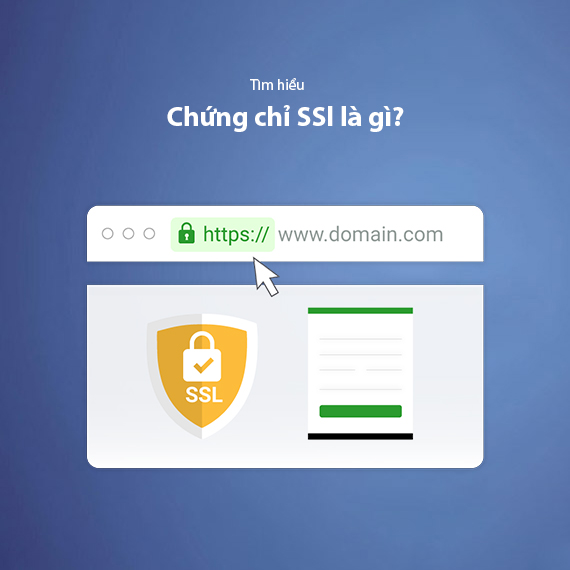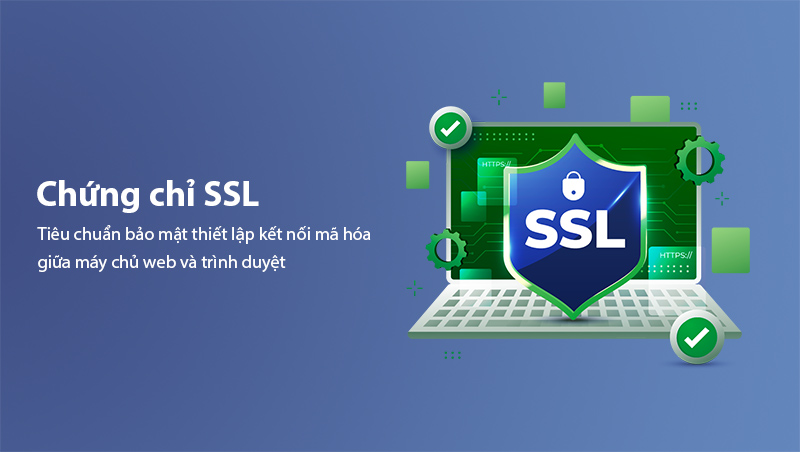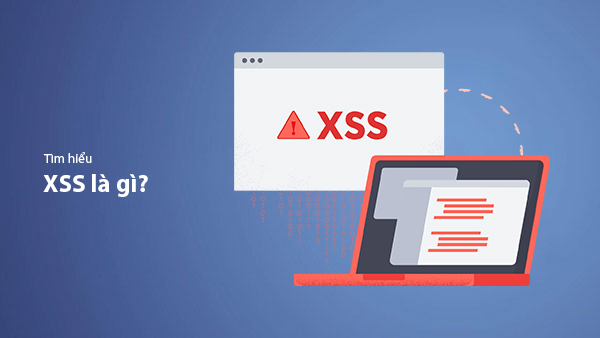What is SSL? A Comprehensive Guide to Free SSL Installation
- Published on

- What is SSL?
- How Does an SSL Certificate Work?
- Why Should You Use an SSL Security Certificate?
- SSL Terminologies You Need to Know
- Domain Validation (DV SSL)
- Organization Validation (OV SSL)
- Extended Validation (EV SSL)
- Subject Alternative Names (SANs SSL)
- Wildcard SSL Certificate (Wildcard SSL)
- Guide to Installing Free SSL Certificates for Your Website
- Step 1: Access your hosting control panel or cPanel
- Step 2: Locate and open the "SSL/TLS" or "Let's Encrypt" section
- Step 3: Select the domain to install SSL
- Step 4: Verify domain ownership
- Step 5: Install the SSL certificate
- Step 6: Redirect all traffic from HTTP to HTTPS
- Tools to Check Whether Your SSL Certificate is Valid
- SSL Labs (https://www.ssllabs.com/ssltest/)
- Why No Padlock (https://www.whynopadlock.com/)
- SSL Checker (https://www.sslshopper.com/ssl-checker.html)
- ZeroSSL (https://zerossl.com/tools/ssl-checker/)
- Chrome DevTools (Direct browser checking tool)
- Conclusion
What is SSL?
SSL (Secure Sockets Layer) is a standard security technology that establishes an encrypted connection between the web server and the user's browser. When a website installs an SSL certificate, data such as login information, payment details, or other sensitive information is encrypted before being transmitted, helping prevent interception by third parties or hackers.

The use of SSL not only helps protect user information but also ensures that they are accessing the legitimate website, not a fraudulent one. It is also a requirement if you want your website to display the secure padlock icon with the "https://" prefix in the address bar, creating a sense of trust and professionalism for customers.
Read more: How to choose high-quality hosting to improve website security
How Does an SSL Certificate Work?
An SSL certificate works by encrypting the data between the web server and the browser using two types of keys: Public Key and Private Key. Below is a step-by-step explanation of how SSL works:
-
Establishing a connection
When a user accesses a website with SSL installed, the browser requests the server to verify its SSL certificate. The server sends the SSL certificate, which includes the public key and verification information, so the browser can check whether the certificate is valid and issued by a trusted authority. -
Verifying the certificate
The browser checks the SSL certificate through Certificate Authorities (CA) to ensure that it is not counterfeit. If the certificate is valid, the browser displays a padlock icon in the address bar. -
Encrypting the data
After verification, the browser and server use a Session Key to encrypt the data transmitted between them. This key is generated during the session and ensures that all information sent is unreadable by third parties. -
Decrypting the data
The server and browser use their private and public keys to decrypt the data when needed. Only the server with the private key can decrypt information that was encrypted using the public key, ensuring the exchange of information is completely secure. -
Secure connection established
After the key exchange and verification process is complete, the connection between the user and the website is established using the HTTPS (Hypertext Transfer Protocol Secure), ensuring that all transmitted data is safe and cannot be intercepted or altered.
Thanks to this mechanism, SSL not only ensures data security but also strengthens data integrity and website authentication, especially for websites containing sensitive information such as banking systems, e-commerce sites, or online services.
Learn more: A guide to optimizing website security
Why Should You Use an SSL Security Certificate?
The use of SSL certificates provides numerous practical benefits for websites, not only in terms of security but also in improving user experience and performance:
-
Protect user data
SSL encrypts all data transmitted between the user and the server, preventing cyberattacks from stealing sensitive information such as login credentials, payment details, or personal data. This is particularly important for e-commerce websites or pages that handle online transactions. -
Authenticate the website's legitimacy
SSL certificates help users confirm that they are accessing a trusted website, not a phishing site. This builds customer trust, especially when the website displays a padlock icon in the browser. -
Improve SEO ranking
Search engines like Google prioritize ranking higher for websites using HTTPS. Installing SSL not only makes the website secure but also increases its visibility in search results, attracting more organic traffic. -
Increase credibility and trustworthiness
Websites with SSL make users feel more secure when providing information or making transactions. Conversely, browsers may warn users if they access a website without SSL, which can cause users to leave the site immediately. -
Mandatory for online payment websites
For websites that process credit card information or online payments, installing SSL is not just an option but a requirement to comply with security standards like PCI DSS (Payment Card Industry Data Security Standard).
SSL Terminologies You Need to Know
Choosing and installing the right SSL certificate for your website requires understanding common types of SSL certificates and related terms. Below are the types of SSL certificates you need to know:
Domain Validation (DV SSL)
DV SSL is the most basic type of SSL certificate. The SSL provider only requires you to verify domain ownership through email or DNS records. This type of certificate is popular for personal websites or blogs due to its quick issuance process and low cost.
Benefit: Issued within a few minutes, making your website display a secure HTTPS connection with a padlock icon.
Organization Validation (OV SSL)
OV SSL requires detailed verification of organizational or business information, including a business registration license and other legal documents. This type of certificate is suitable for businesses looking to build trust with customers, as company information will be clearly displayed when viewing the certificate.
Benefit: Increases credibility for small and medium-sized businesses, making the website look professional.
Extended Validation (EV SSL)
EV SSL is the highest level of SSL certificate validation. When installing EV SSL, the business name appears directly in the browser's address bar. To obtain an EV SSL certificate, the business must undergo a strict verification process by the Certificate Authority (CA).
Benefit: Provides absolute trust for users, suitable for banks, financial companies, and large e-commerce organizations.
Subject Alternative Names (SANs SSL)
SANs SSL allows you to use a single SSL certificate to protect multiple domains. This is an optimal solution for businesses that have multiple websites or subdomains that need to be secured.
Example: Protect www.example.com, blog.example.com, and shop.example.com with a single certificate.
Wildcard SSL Certificate (Wildcard SSL)
Wildcard SSL is a type of certificate that protects one primary domain and all its subdomains. For example, if you install Wildcard SSL for example.com, all subdomains like mail.example.com or store.example.com will also be protected.
Benefit: Saves cost and effort when managing security for multiple subdomains simultaneously.
Understanding the types of SSL certificates and related terms helps you choose the right certificate for your website’s security needs.
Next, let's dive into the step-by-step guide to installing free SSL certificates for your website.
Guide to Installing Free SSL Certificates for Your Website
Installing free SSL is an effective way to enhance your website’s security without incurring costs. One of the most popular solutions is using Let's Encrypt, a widely trusted provider of free SSL certificates. Here’s a detailed step-by-step guide to installing free SSL for your website:
Step 1: Access your hosting control panel or cPanel
Log in to your hosting management account (cPanel or similar control panels such as Plesk, DirectAdmin). This is where you will perform the SSL installation for your website.
Step 2: Locate and open the "SSL/TLS" or "Let's Encrypt" section
In the control panel interface, find the SSL/TLS or Let's Encrypt SSL section (depending on the hosting provider). If this option is not available, contact your hosting provider to activate the free SSL feature.
Step 3: Select the domain to install SSL
When opening Let's Encrypt, you will see a list of domains in your account. Select the domain you want to secure with an SSL certificate and click the "Issue" or "Generate" button.
Tip: If you need to secure multiple subdomains, use the Wildcard SSL option if available.
Step 4: Verify domain ownership
The system will require you to verify that you own the domain to be secured. There are two common methods:
- DNS verification: Add a CNAME or TXT record to the domain’s DNS system.
- File upload verification: Download a verification file and upload it to the root folder of your website via FTP or File Manager.
Step 5: Install the SSL certificate
Once verified, the SSL certificate will be automatically issued and installed on your website. You will see the padlock icon and the "https://" prefix in the browser’s address bar.
Check: Visit your website to ensure the HTTPS connection is working correctly.
Step 6: Redirect all traffic from HTTP to HTTPS
To ensure all traffic to your website uses a secure connection, configure a redirect from HTTP to HTTPS by adding the following code to the .htaccess file:
RewriteEngine On
RewriteCond %{HTTPS} off
RewriteRule ^(.*)$ https://%{HTTP_HOST}/$1 [L,R=301]
Installing free SSL not only ensures your website meets security standards but also improves user trust and experience.
Next, we will look at tools to check whether your SSL certificate is valid to ensure your website is always safe and secure.
Tools to Check Whether Your SSL Certificate is Valid
After installing SSL, checking whether the certificate is working correctly and meeting standards is crucial to ensure comprehensive website security. If the SSL certificate is not configured correctly, the browser may warn users that your website is "not secure," causing them to lose trust. Here are some reliable SSL checking tools:
SSL Labs (https://www.ssllabs.com/ssltest/)
SSL Labs is a comprehensive SSL checking tool that provides detailed reports on:
- SSL certificate installation status
- The type of encryption used
- Security errors and potential vulnerabilities
The results display a grade from A+ to F, helping you assess the quality of the SSL configuration and whether the website complies with the latest security standards.
Why No Padlock (https://www.whynopadlock.com/)
This tool helps detect insecure resources on your website, such as images, scripts, or CSS files loaded via HTTP instead of HTTPS. If your website displays a “not secure” warning, this tool is ideal for identifying and fixing the issue.
Tip: Make sure all internal links and images are switched to HTTPS to avoid "Mixed Content" errors.
SSL Checker (https://www.sslshopper.com/ssl-checker.html)
SSL Checker is a quick and simple tool to check basic information about your SSL certificate, such as:
- The certificate's expiration date
- The Certificate Authority (CA) that issued it
- Whether the certificate chain (Certificate Chain) is valid
This tool is particularly useful for checking whether the certificate has expired or has been incorrectly configured, leading to insecure connections.
ZeroSSL (https://zerossl.com/tools/ssl-checker/)
In addition to providing free SSL certificates, ZeroSSL also offers an SSL checking tool to confirm whether your SSL installation was successful. ZeroSSL’s reports are easy to understand, suitable for both beginners and experts.
Chrome DevTools (Direct browser checking tool)
You can check your SSL certificate directly using Chrome's DevTools:
- Press F12 or Ctrl + Shift + I to open DevTools.
- Select the Security tab to check the HTTPS secure connection status and SSL certificate details.
Using these tools ensures that your SSL certificate always works correctly and provides the best protection for user data.
Conclusion
The SSL certificate plays an essential role in protecting user data and building trust in your website. Installing SSL not only safeguards your website against cyber threats but also offers numerous benefits, such as improving SEO rankings, enhancing brand credibility, and improving user experience.
If your website has not yet installed SSL, now is the right time to do so. Be sure to regularly check and renew your SSL certificate to maintain a secure and professional website.
Securing your website with SSL is a crucial step in building success and earning customer trust.
Latest Posts

Lesson 26. How to Use break, continue, and return in Java | Learn Java Basics
A guide on how to use break, continue, and return statements in Java to control loops and program execution flow effectively.

Lesson 25. The do-while Loop in Java | Learn Basic Java
A detailed guide on the do-while loop in Java, including syntax, usage, examples, and comparison with the while loop.

Lesson 24. How to Convert Decimal to Binary in Java | Learn Basic Java
A guide on how to convert numbers from the decimal system to the binary system in Java using different methods, with illustrative examples.

Lesson 23. How to Use the While Loop in Java | Learn Java Basics
Learn how to use the while loop in Java with syntax, real-world examples, and practical applications in Java programming.
Related Posts

What is REST API? Complete A-Z Knowledge About REST API
REST API is one of the essential concepts that every backend developer needs to fully understand. This article provides comprehensive knowledge about REST API, including its definition, principles of operation, and how to build a standard RESTful API.

What is HATEOAS? How to Build APIs Using HATEOAS
Learn about HATEOAS, an important concept in API development, and how to build APIs using HATEOAS to improve interactivity and scalability.

What Is GraphQL? The Advantages of GraphQL Over REST API
Explore GraphQL, a modern API technology, and why it outperforms REST API in many web development scenarios.

What is XSS? Signs of Detection and Effective Prevention Methods
Learn about XSS, signs of detection, and effective prevention methods for XSS attacks in websites.

